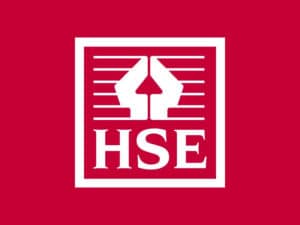New HSE report looks into asbestos exposures to those working in the licensed asbestos removal industry
 Even in the sector of the economy that is specifically concerned with the responsible removal of asbestos from premises where existence of the substance could pose a danger, concerns persist about the scope for licensed asbestos workers to be exposed to the lethal material themselves.
Even in the sector of the economy that is specifically concerned with the responsible removal of asbestos from premises where existence of the substance could pose a danger, concerns persist about the scope for licensed asbestos workers to be exposed to the lethal material themselves.
This was the ‘headline’ finding of a new report, RR1176, published by the Health and Safety Executive (HSE). The research report, entitled ‘Asbestos exposures to workers in the licensed asbestos removal industry‘, details concerns in relation to the presence of asbestos fibres in airborne fibres samples, with some airborne fibre concentrations measured in the study being found to be above the limit.
HSE said there was potential for further exposure reduction – for example, by making sure workers wear respiratory protective equipment (RPE) when setting up and dismantling the enclosure used for asbestos removal activities.
A background of continued asbestos risk
Despite a ban being imposed on the import and use of all types of asbestos by 1999, there continues to be 5,000 cancer deaths a year attributed to asbestos exposure; these are believed to largely originate from historical instances of contact with the dangerous fibres in industrial settings.
However, it is also important to note that asbestos may remain present in many buildings built or refurbished prior to 2000, which presents the scope for new exposures to the substance to occur.
Furthermore, work continues to remove asbestos from buildings as part of ongoing risk management processes. Higher-risk asbestos removal work can only be carried out by HSE-licensed contractors, and the Control of Asbestos Regulations set out a need to prevent or effectively control exposure.
What were the key findings of the research?
The research was conducted in order to provide information on exposures to licensed asbestos removal workers in Great Britain, and to assess the extent to which work practices complied with HSE guidance.
HSE inspectors visited eight removal sites over the course of 2016 to 2019. The removals included asbestos insulating board (AIB), insulation and sprayed coating.
It is important to note that with the removal workers and contractors involved having participated on a voluntary basis, the findings were likely to be reflective of the exposure levels and working practices seen among those contractors and workers that were striving to achieve good practice, instead of being representative of the broader asbestos removals industry.
However, even with this factor accounted for, the research produced some concerning findings. Analysis of personal monitoring samples, for instance, indicated that some exposure to asbestos occurred during tasks other than the actual removal of asbestos. Such non-removal activities included construction and dismantling of the enclosures, as well as waste transfer.
Also of concern to the researchers was the discovery of inconsistent RPE use for these tasks, particularly as far as the construction of enclosures was concerned. This led to instances during such tasks of removal workers being subject to a higher level of asbestos exposure than was the case in the enclosure – an indication that it may be necessary to strengthen the guidance on RPE use.
The researchers also found that some personal exposure measurements were above the control limit.
On one of the eight sites, sprayed coating was being removed. This is a friable high asbestos content material, presenting a high likelihood of fibres being released if disturbed. This site saw higher personal exposures than the other seven sites, with some 80% of the personal exposure measurements exceeding the control limit.
HSE said the findings from the research were being used to inform the government agency’s communication with stakeholders, as well as updates to its guidance.
Oracle Solutions is available to assist with your asbestos management needs
Some of the findings from the HSE research are doubtless greatly concerning, and will need to be carefully heeded by individuals and organisations involved in the asbestos management, consultancy and removal industries.
If you would appreciate advice, guidance and help from a trusted consultancy on how your own business can better manage asbestos that may be present on its site, our team at Oracle Solutions would be pleased to hear from you, and to present you with a free, fast and competitive quote.
